Conserving the Globally Rare Porter's Goldenrod
Southeastern Grasslands Institute (SGI), based out of Austin Peay State University, is dedicated to saving the forgotten grasslands of the Southeast. SGI works to achieve this mission through on-the-ground restoration of remnant and re-created habitats, preservation through acquisition and easements, and research. One area of focus at SGI is the conservation of rare and declining grassland plant species and communities through various in situ and ex situ projects. One such species is Porter’s Goldenrod (Solidago porteri), a G1, globally rare plant with an interesting history.
Over a century ago, the botanist and Presbyterian minister Thomas Conrad Porter collected a rather elusive plant southeast of Atlanta, Georgia. Half a century later, the old specimen was seen by Porter’s nephew, the famous botanist John Kunkel Small (author of the original Flora of the Southeastern United States), who recognized it as an undescribed species and named it after his esteemed uncle. Porter’s pressed plant specimens then sat nestled away in the New York Botanical Garden Herbarium, lost to the annals of history – until a century later, when SGI’s Executive Director, Dr. Dwayne Estes, discovered a new population in south-central Tennessee, nearly 250 miles from Porter’s original collection site.
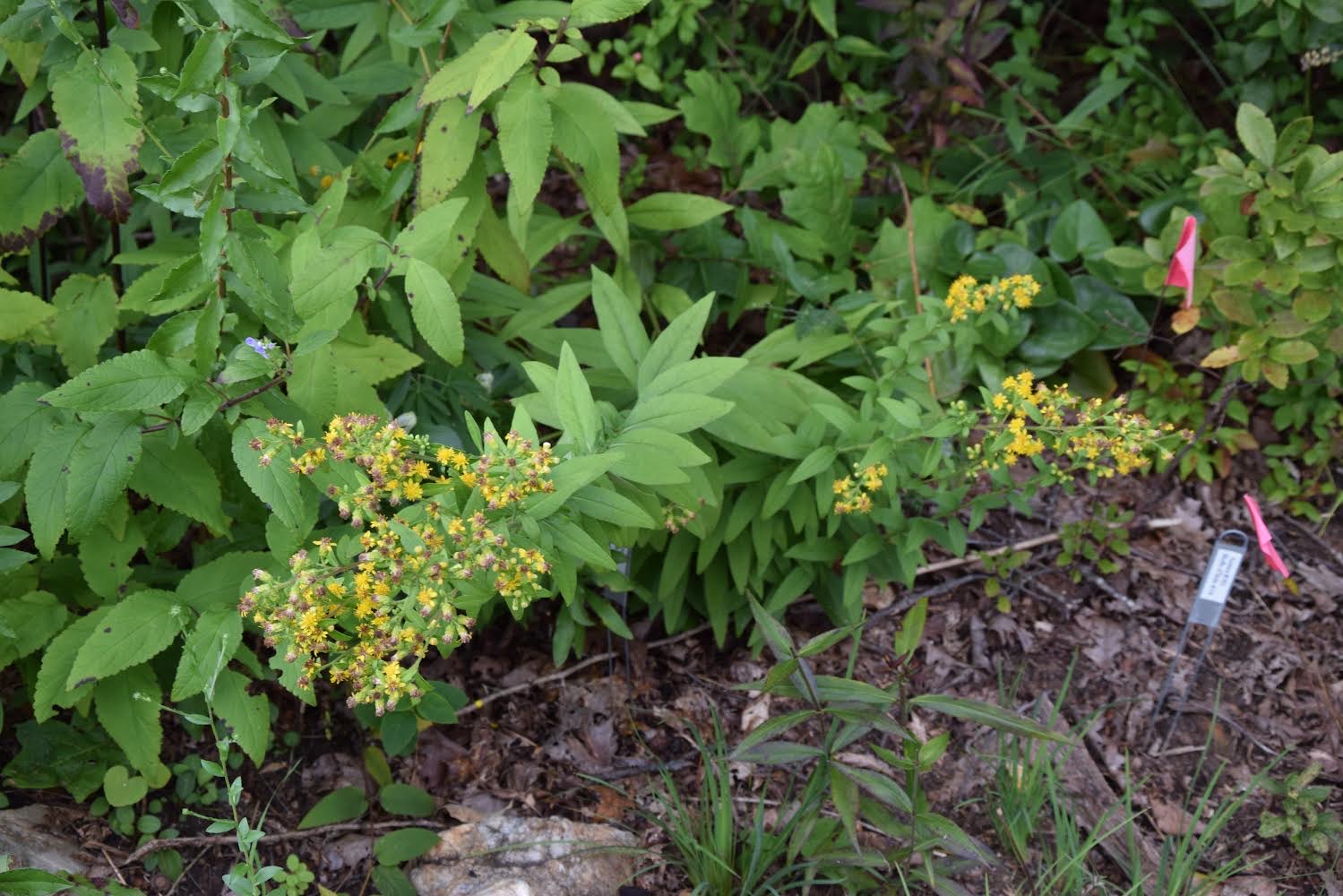
Today, Porter’s Goldenrod is known from one population in Tennessee and two additional populations in northern Alabama, all three of which are on private property. A small population in Georgia, discovered circa 2010 in a narrow strip of woods between two houses in a residential development, has since been extirpated – with the exception of one remaining plant in the caring hands of horticulturists at the State Botanical Garden of Georgia.
Cooper Breeden, Plant Conservation Manager at SGI, spearheads the conservation efforts for Porter’s Goldenrod. As a baseline, he has made seed collections from all known populations, which are maintained in SGI’s Conservation Seed Bank. The work to save this goldenrod has allowed SGI to forge new partnerships, which have greatly improved our ability to advance the recovery of the Porter’s Goldenrod.
The Porter’s Goldenrod population in Tennessee is on an active Loblolly Pine plantation. Fortunately, the forestry management company that manages the site has not only been cooperative but has become heavily involved in its conservation. They designated a portion of the plantation where the Porter’s Goldenrod occurs as a preserve, thinning the pines to reduce canopy cover and burning the site. They have also supported SGI staff and volunteers in managing the encroachment of woody plants and invasive species, as they work to restore the site to oak savanna habitat. Ultimately, SGI hopes to facilitate the permanent protection of the site through acquisition or easement.
Cooper has propagated a small collection of Porter’s Goldenrod from the Tennessee population and is now working with horticulturists at the Nashville Zoo to maintain the propagules in a living collection. Some of these plants will ultimately be used in a reintroduction project on protected land. SGI has located several prospective sites and plans to begin a reintroduction project as early as Fall 2023.
While the one remaining individual Porter’s Goldenrod from the Georgia population is being pampered at a botanical garden, SGI and partners hold out hope for the existence of more populations as yet undiscovered. Last summer, Cooper coordinated search teams with Georgia Department of Natural Resources botanists, as well as an ambitious biology student who volunteered a week of her time to search target areas in the vicinity of the extirpated population. Though the team did not find any new populations of Porter’s Goldenrod, the effort was successful in another way: the discovery of several previously unknown populations of other rare plant species, including Appalachian Rose-gentian (Sabatia capitata) (G2); Smith’s Sunflower (Helianthus smithii) (G2); and Fraser’s Loosestrife, (Lysimachia fraseri) (G3). In years to come, SGI will continue working with other partners to coordinate search efforts.
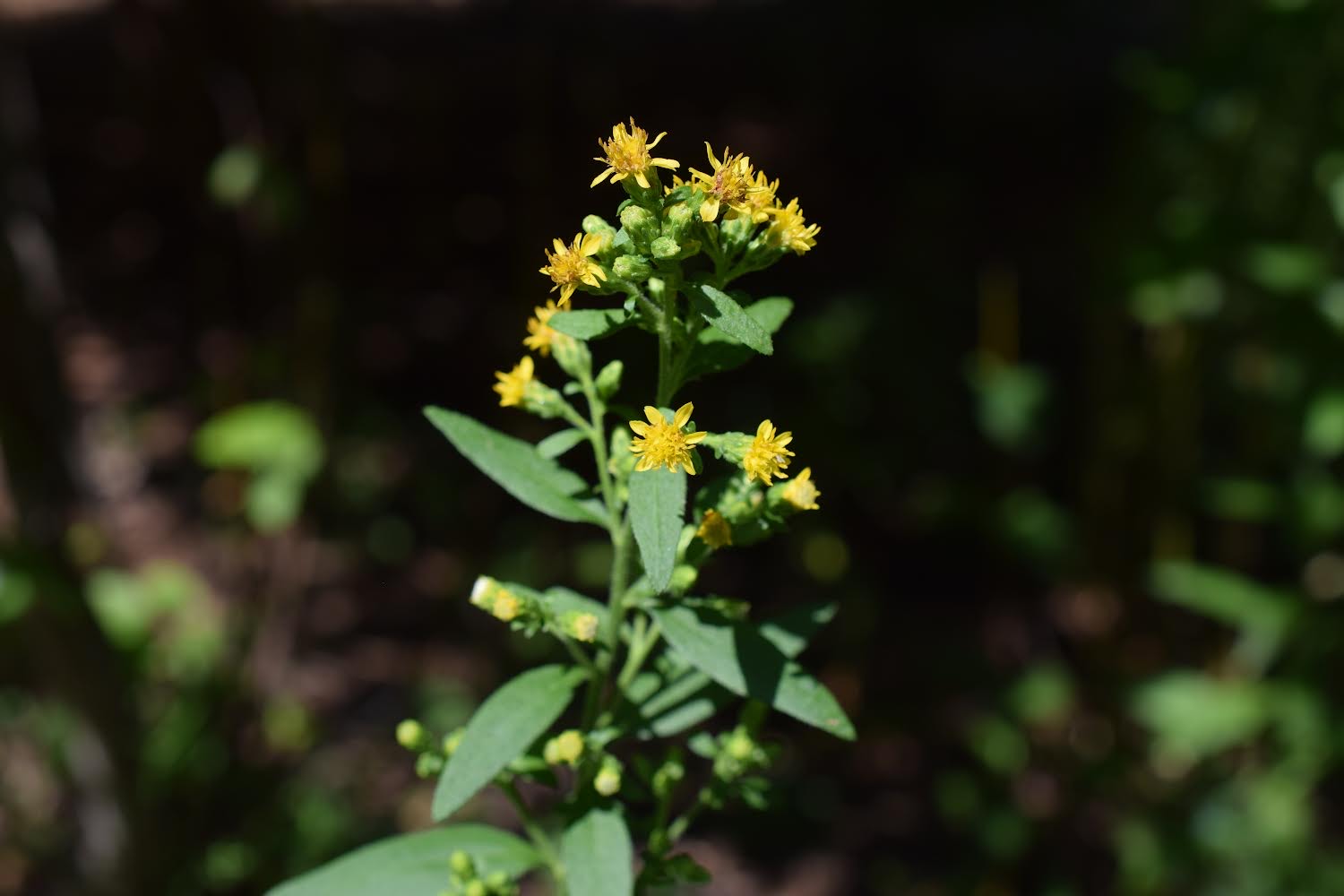
Porter’s Goldenrod is not difficult to propagate and seems to be pretty hardy, once mature – which may leave people wondering about the reason for its rarity. Unfortunately, there is very little remnant savanna habitat in the Southeast, especially in the non-coastal regions where these populations occur. All populations are relegated to woodland margins along roads, in forgotten corners of residential yards, or in small openings in dense fire-suppressed woodlands. Restoring Porter’s Goldenrod populations in the wild will require restoring the savanna habitat that is so crucial to its survival.
-
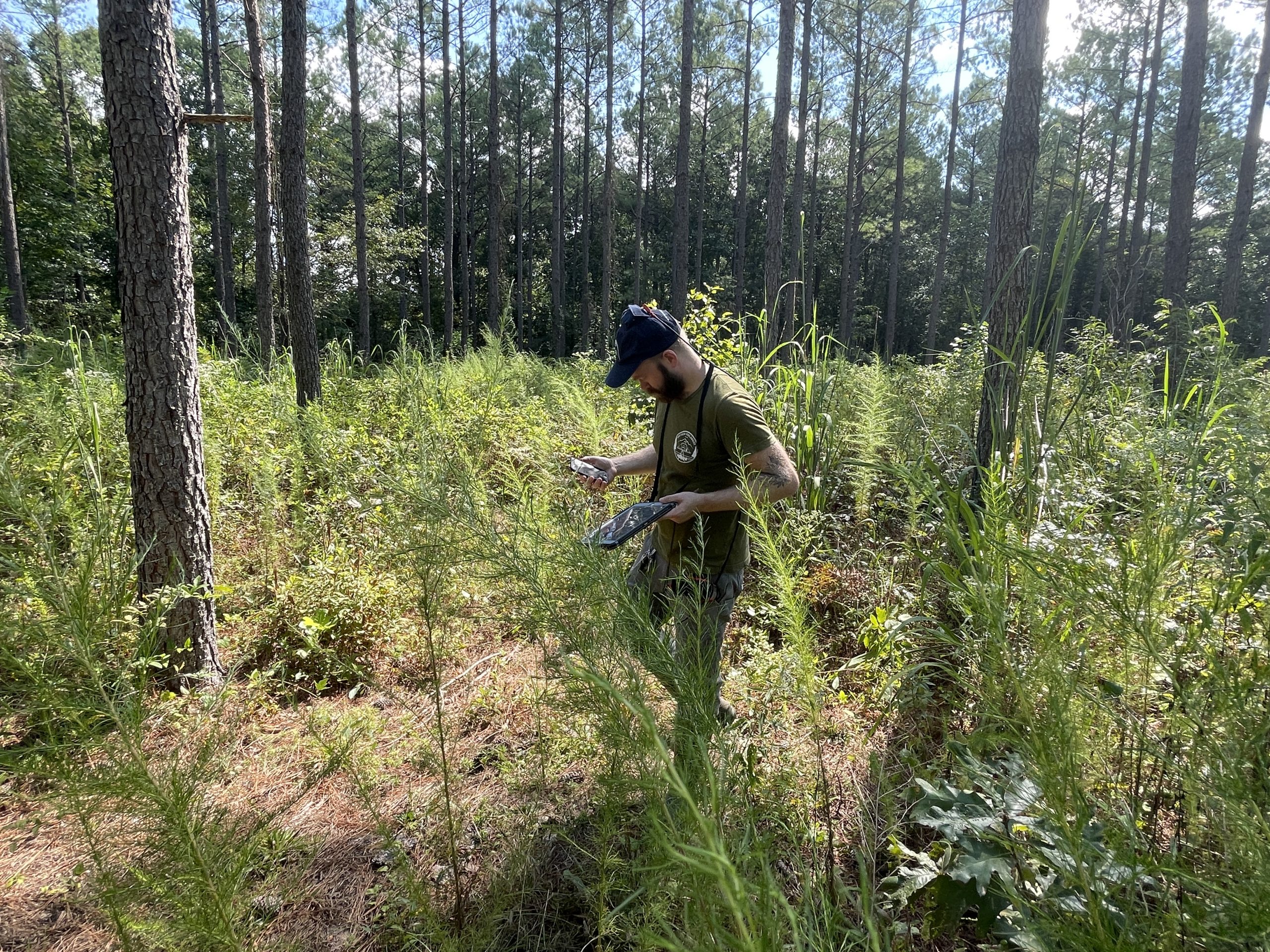
SGI's Cooper Breeden monitors a Solidago porteri site where long term vegetation plots have been established. A portion of this active pine plantation has been established as a preserve for the Porter's Goldenrod and is in the early stages of management. Photo by Marcello De Vitis. -
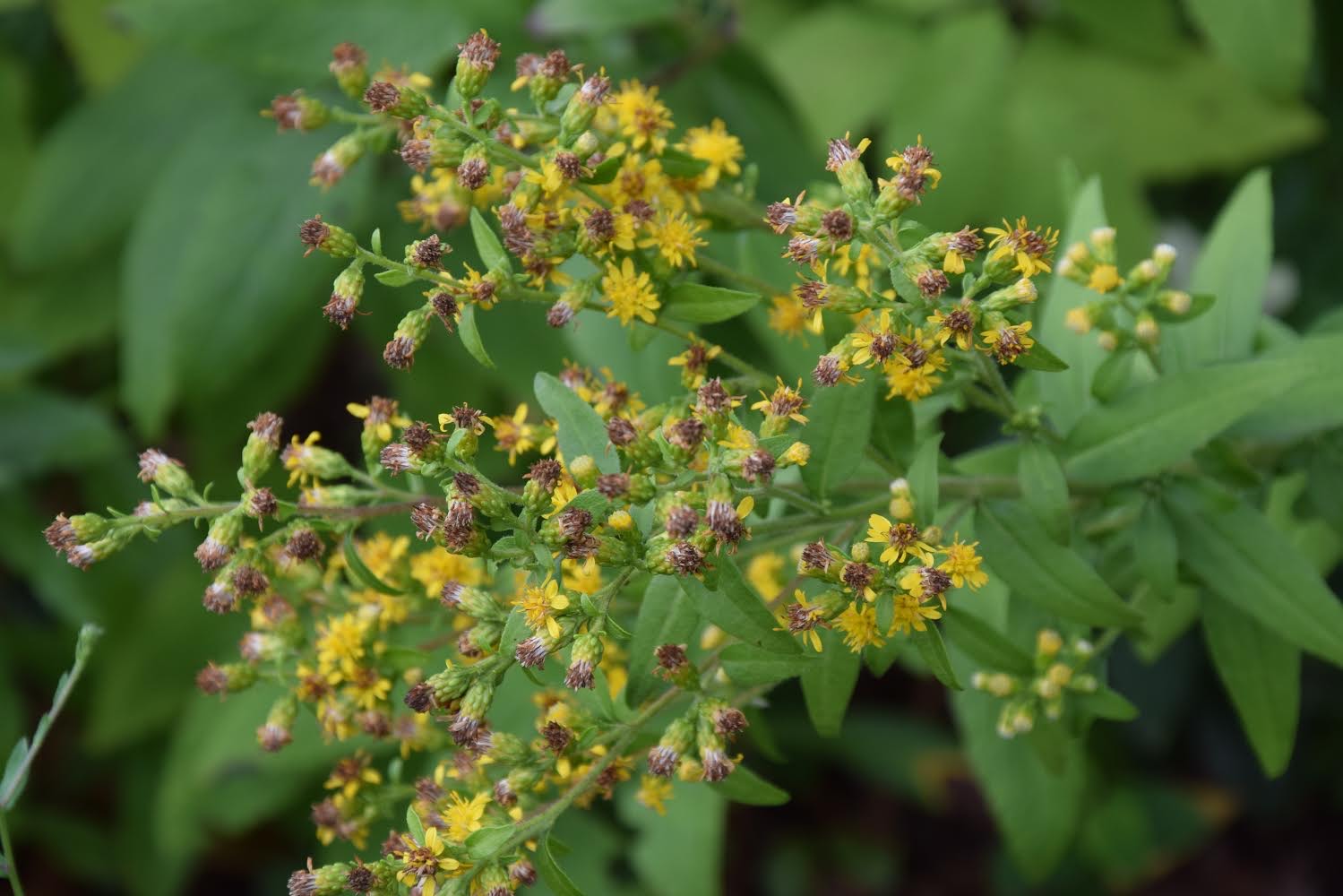
Solidago porteri in bloom. Photo by Ellen Honeycutt. -
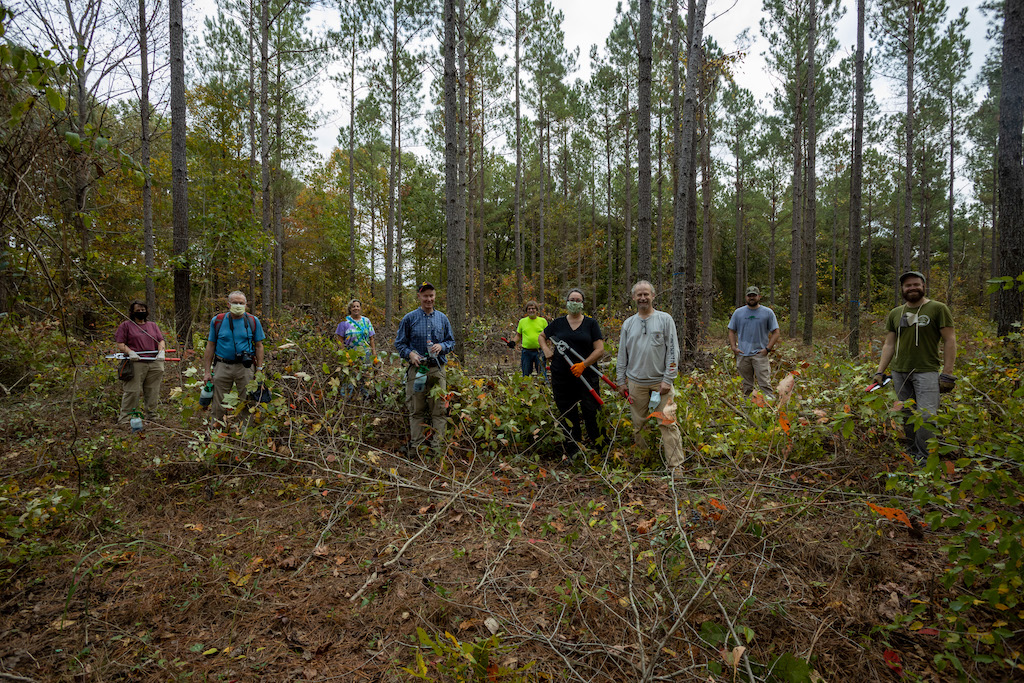
SGI volunteers remove understory woody vegetation and treat the stumps with herbicide to prevent resprouting at a site with Porter’s Goldenrod (Solidago porteri). Photo by Rebecca Johnson.